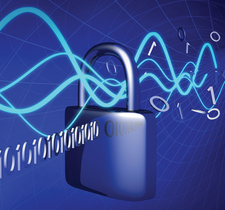Create a bootable USB stick with terminal UI display
Programming Snapshot – Bootable USB with Go

© Lead Image © Pei Ling Hoo, 123RF.com
A Go program writes a downloaded ISO file to a bootable USB stick. To prevent it from accidentally overwriting the hard disk, Mike Schilli provides it with a user interface and security checks.
To test new Linux distributions on real hardware, a bootable USB stick with a downloaded image in ISO format will help with bootstrapping the installation. Rebooting the computer with the stick plugged in will often bring up a Live system that can be played around with to your heart's content, possibly after having to make some changes to the boot order in the BIOS.
How does the ISO file get onto the stick? Ultimately, this is done quite simply with a dd command that expects the ISO file as the input (if) and the device entry of the stick (for example /dev/sdd) as the output (of).
Tools like Ubuntu's Startup Disk Creator make things even more convenient with a graphical UI, but there are some concerns. Under no circumstances would you want the tool to have a bug that accidentally overwrites the next hard disk in the device tree instead of the stick.
[...]
Buy this article as PDF
(incl. VAT)
Buy Linux Magazine
Subscribe to our Linux Newsletters
Find Linux and Open Source Jobs
Subscribe to our ADMIN Newsletters
Support Our Work
Linux Magazine content is made possible with support from readers like you. Please consider contributing when you’ve found an article to be beneficial.

News
-
Linux Kernel 6.17 Drops bcachefs
After a clash over some late fixes and disagreements between bcachefs's lead developer and Linus Torvalds, bachefs is out.
-
ONLYOFFICE v9 Embraces AI
Like nearly all office suites on the market (except LibreOffice), ONLYOFFICE has decided to go the AI route.
-
Two Local Privilege Escalation Flaws Discovered in Linux
Qualys researchers have discovered two local privilege escalation vulnerabilities that allow hackers to gain root privileges on major Linux distributions.
-
New TUXEDO InfinityBook Pro Powered by AMD Ryzen AI 300
The TUXEDO InfinityBook Pro 14 Gen10 offers serious power that is ready for your business, development, or entertainment needs.
-
Danish Ministry of Digital Affairs Transitions to Linux
Another major organization has decided to kick Microsoft Windows and Office to the curb in favor of Linux.
-
Linux Mint 20 Reaches EOL
With Linux Mint 20 at its end of life, the time has arrived to upgrade to Linux Mint 22.
-
TuxCare Announces Support for AlmaLinux 9.2
Thanks to TuxCare, AlmaLinux 9.2 (and soon version 9.6) now enjoys years of ongoing patching and compliance.
-
Go-Based Botnet Attacking IoT Devices
Using an SSH credential brute-force attack, the Go-based PumaBot is exploiting IoT devices everywhere.
-
Plasma 6.5 Promises Better Memory Optimization
With the stable Plasma 6.4 on the horizon, KDE has a few new tricks up its sleeve for Plasma 6.5.
-
KaOS 2025.05 Officially Qt5 Free
If you're a fan of independent Linux distributions, the team behind KaOS is proud to announce the latest iteration that includes kernel 6.14 and KDE's Plasma 6.3.5.

